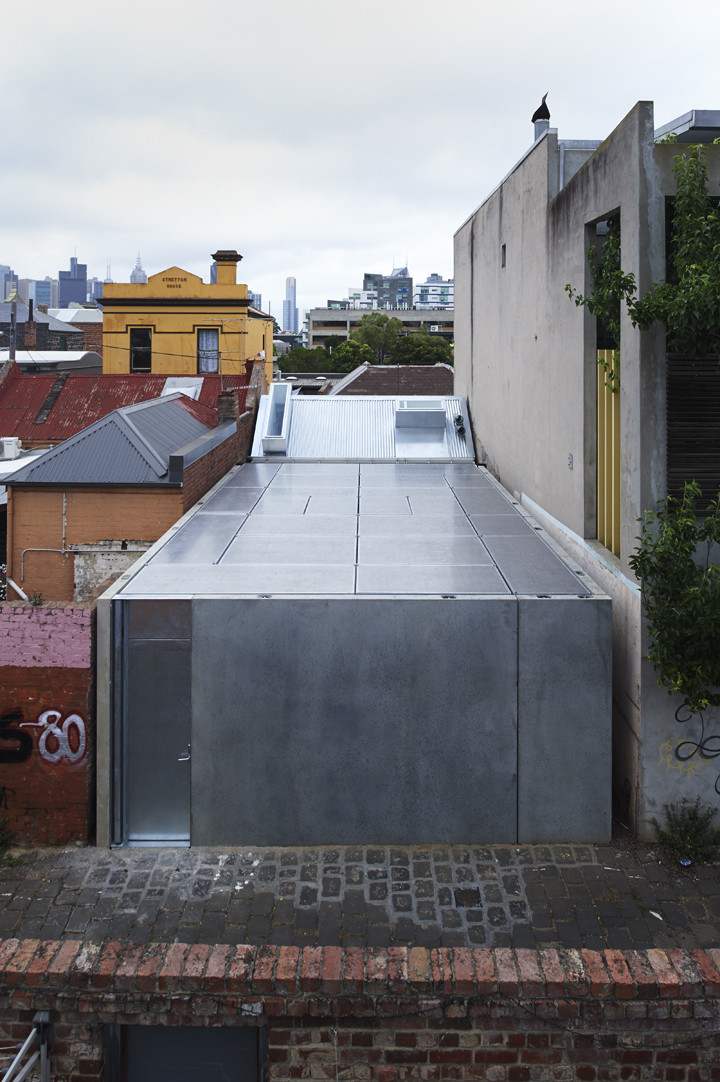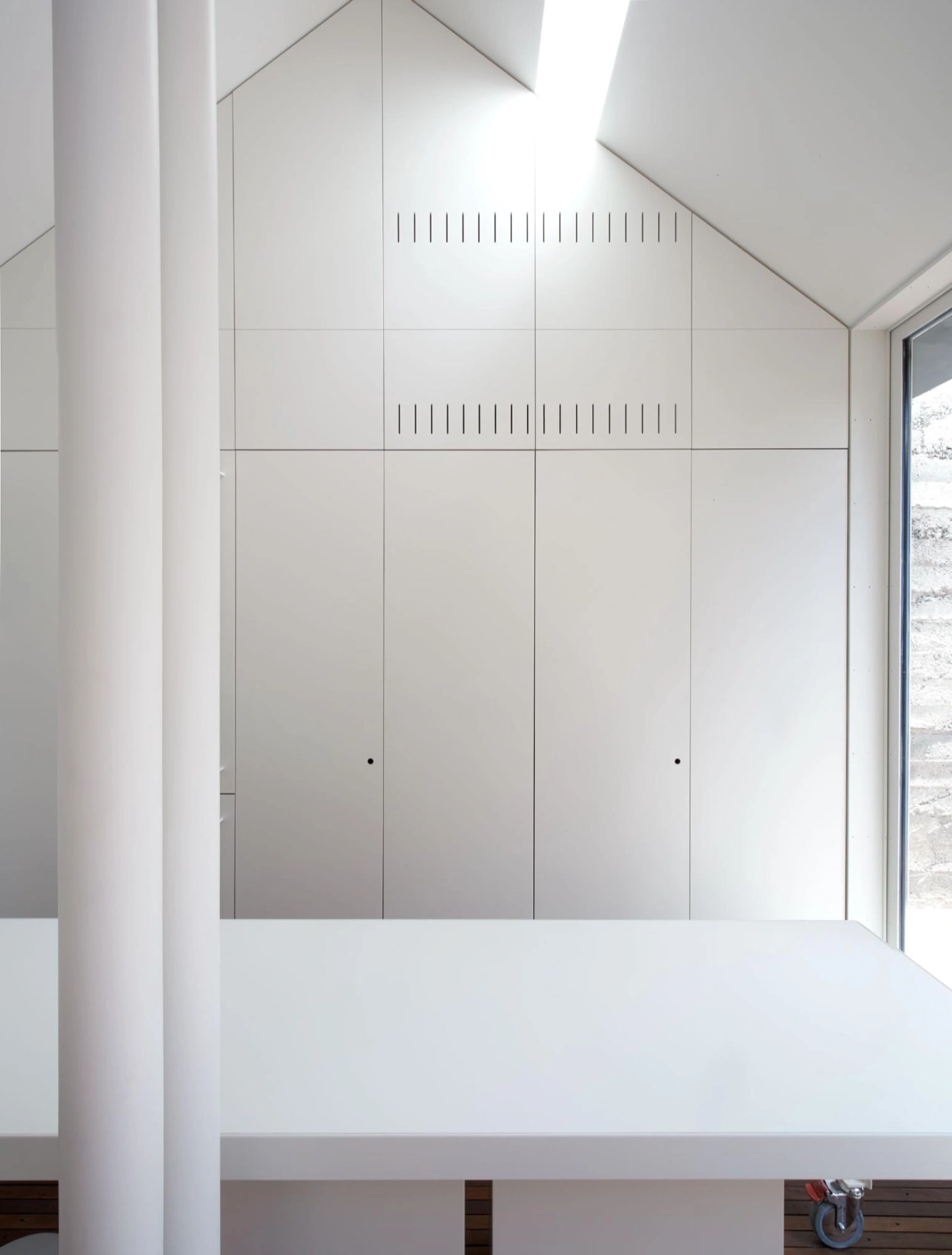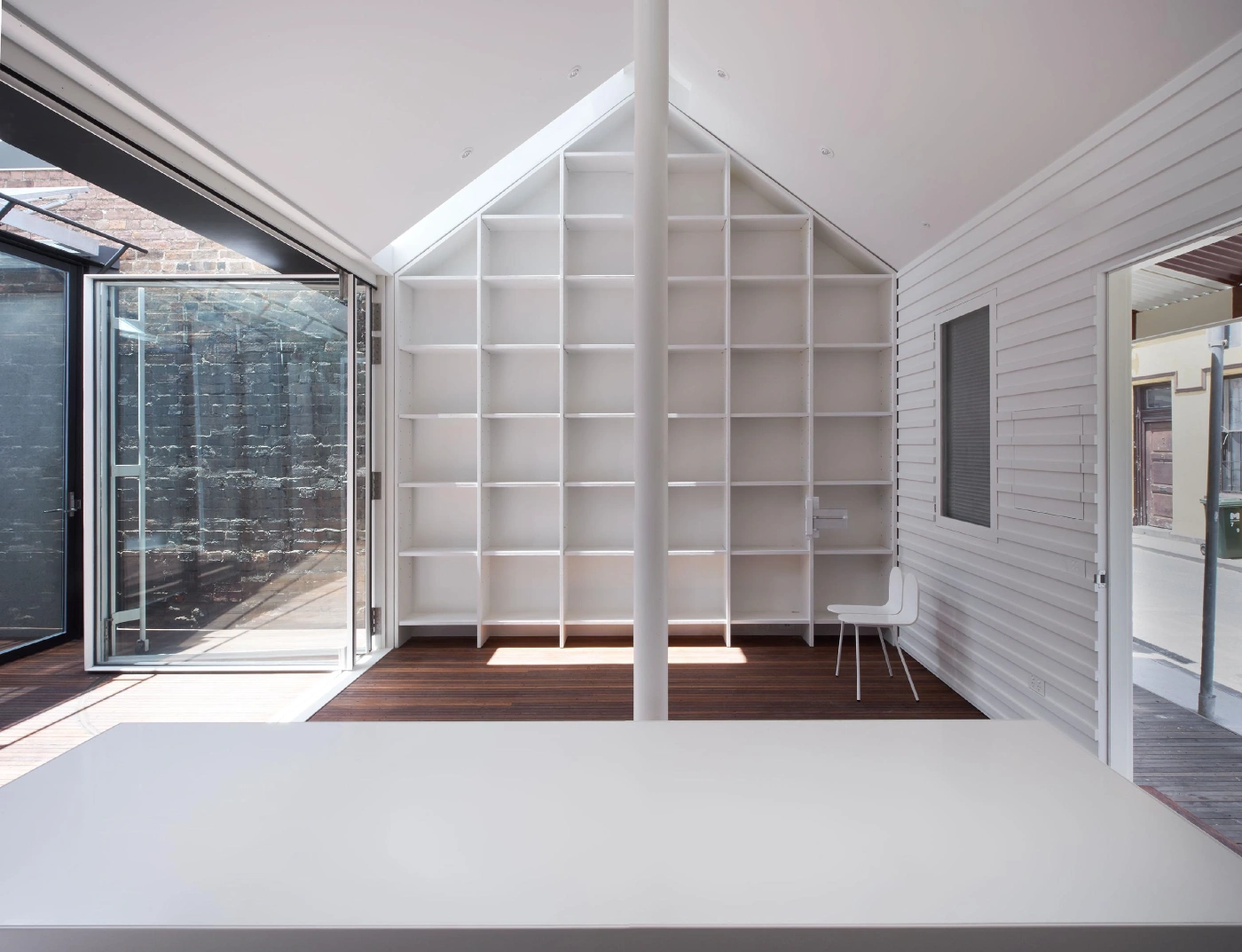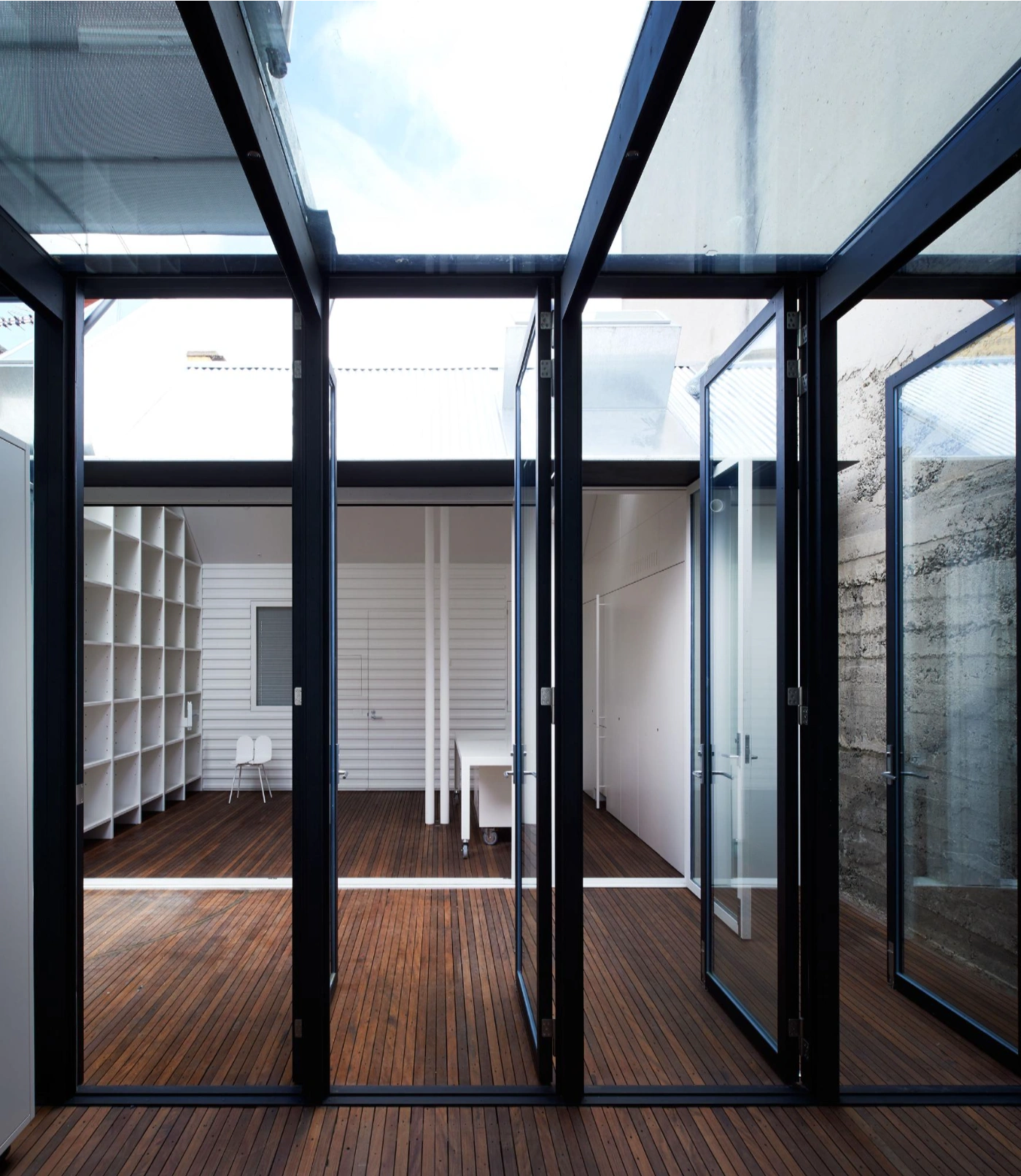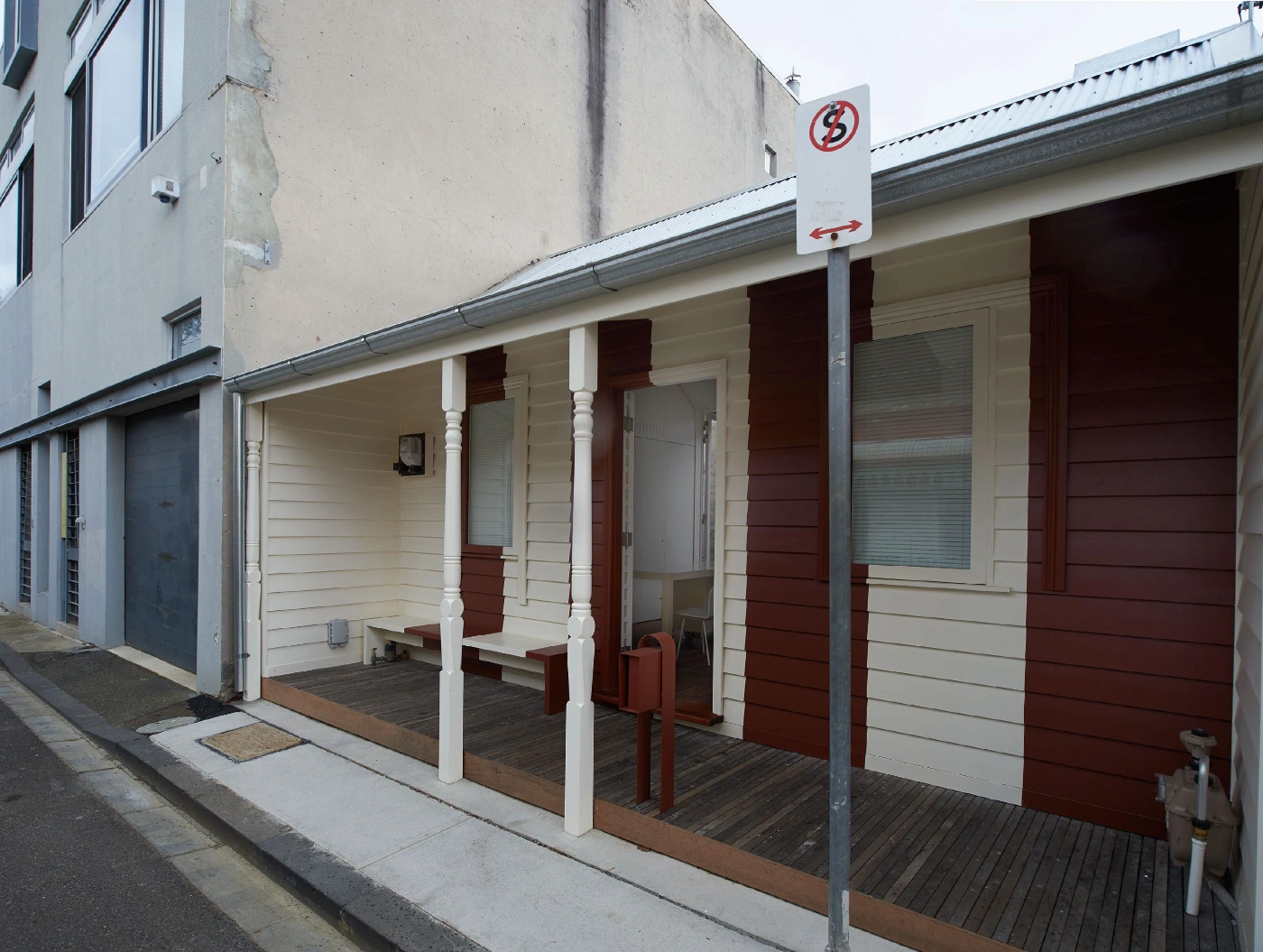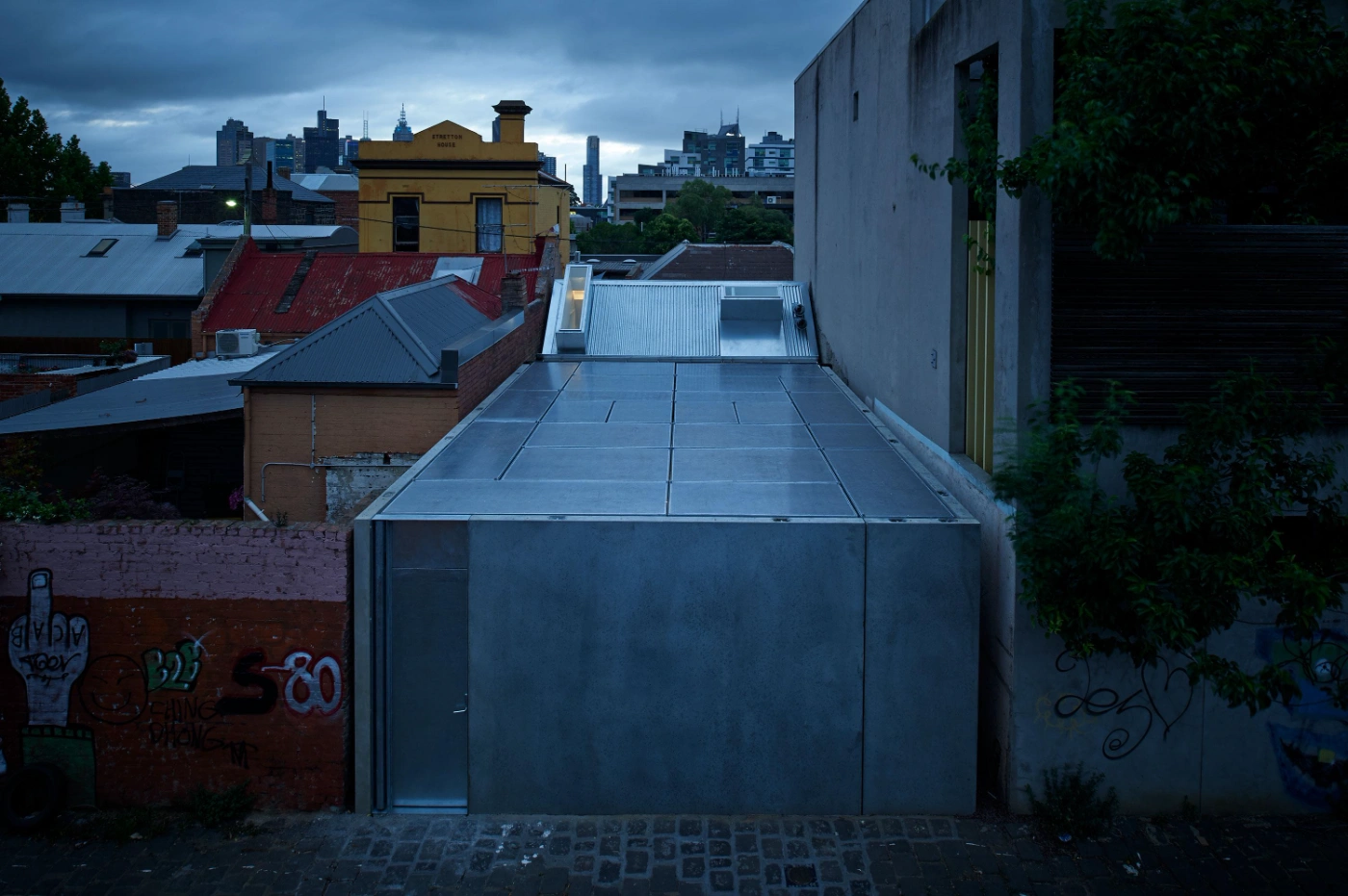Sean Godsell reworks a protected timber cottage in Melbourne into a compact courtyard house, its low glass-roofed addition and shifting timber screens turning regulation into a study in light.
In inner-suburban Melbourne, Green House sits behind a modest timber cottage that local authorities insisted remain intact. Rather than treating the heritage listing as a sentimental facade, Sean Godsell Architects take it as a starting point for a precise grafting of old and new, slipping a small concrete and glass addition behind the retained street front to form a compact urban compound.
Between cottage and addition, a walled courtyard becomes the true centre of the house. Concrete surfaces and tight proportions recall the calm severity of Kazuo Shinohara and Tadao Ando, whose row house in Sumiyoshi is an explicit reference. Here, too, a slice of open sky organizes the plan, turning circulation into an outdoor ritual and allowing the small site to breathe.
Inside the original cottage, partitions are cleared away to create a single volume under a new cathedral ceiling. Two timber posts hold the ridge, while a pair of cylindrical light cannons punch through the roof to draw daylight to the heart of the room. The space keeps the scale and grain of the old structure, but its geometry is sharpened; the timber shell reads as a finely tuned instrument for catching light rather than a nostalgic relic.
The new rear volume is deliberately low, its overall height capped at three metres to avoid overshadowing neighbours and to slip beneath overlooking lines. To compensate, the architects glaze the entire roof and then veil it with an automated timber screen. The slatted lid can slide and pivot into multiple configurations, tempering summer glare, inviting winter sun and constantly re-writing the way light washes the interior surfaces.
When the screen is fully open, the roofscape becomes an occupiable terrace, extending the domestic realm into the air above the lane. From here, the city’s silhouette appears beyond the patched roofs of the neighbourhood, underscoring the project’s modesty in both scale and means. Completed alongside the studio’s larger institutional work, Green House argues that architecture’s charge is unchanged at any size: to choreograph light, weather and movement so that a small life feels both protected and quietly expansive.


